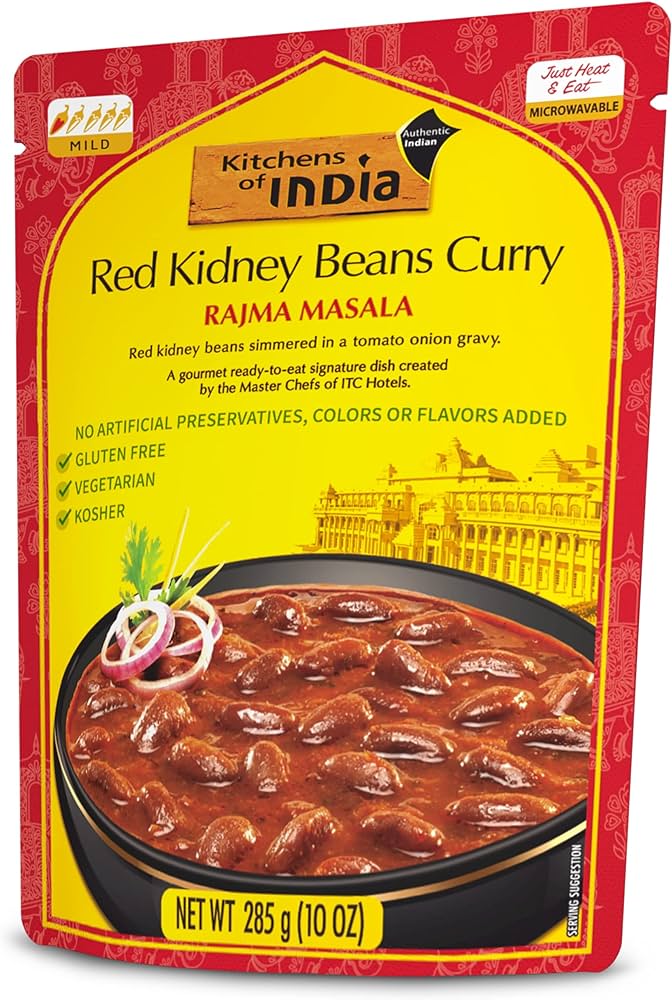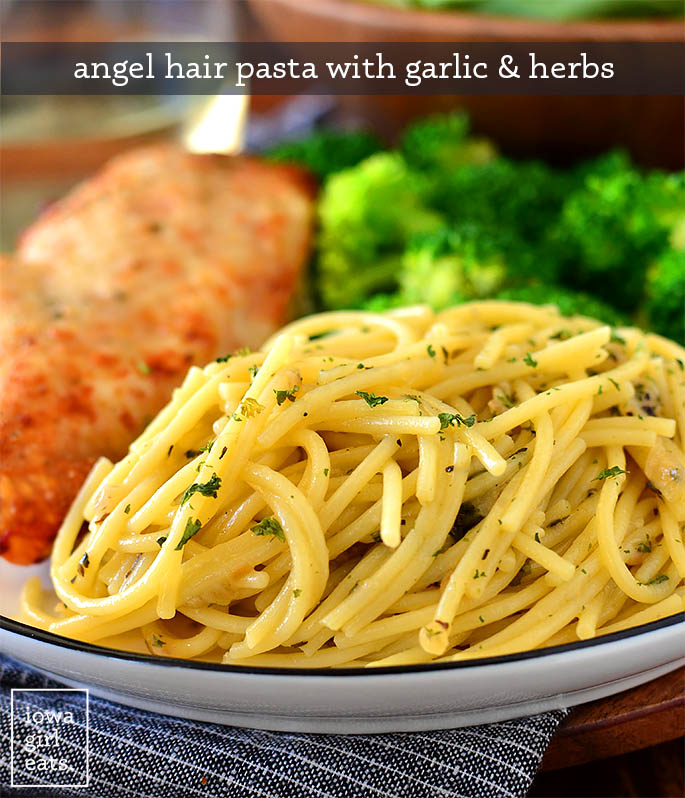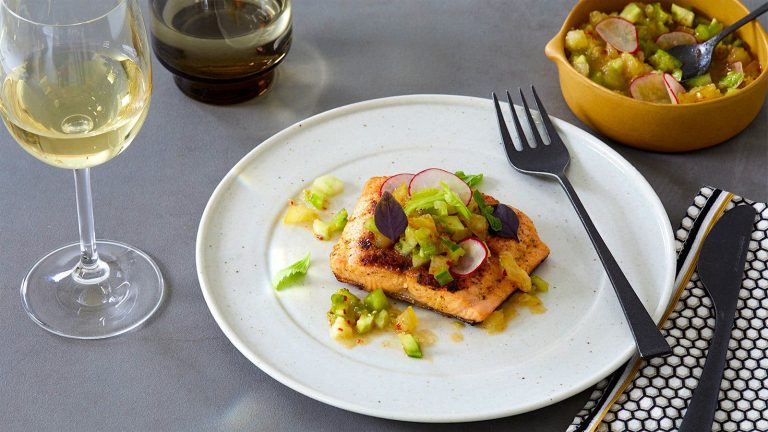Rajma Kidney Bean Curry: Authentic Recipe, Health Benefits, and Perfect Serving Ideas
Spices are crucial to Rajma’s rich flavor. Cumin seeds provide an earthy base, while asafetida adds a subtle umami touch. Turmeric brings vibrant color and mild warmth. Coriander powder enhances the curry’s complex taste. Chili powder provides heat, though you can adjust it to your preference. Garam masala, a blend of several spices, gives the dish its distinctive aroma and depth. Each spice must be fresh for the best results, ensuring the curry is aromatic and inviting.
Importance of Kidney Beans Quality
High-quality kidney beans are vital in making authentic Rajma. Opt for dry beans, as they offer a superior texture and flavor compared to canned ones. Soak the beans overnight to soften them and reduce cooking time. This process ensures they cook evenly, becoming tender yet retaining their shape. Fresh kidney beans, when correctly prepared, absorb the spices better, making the curry more flavorful. Selecting the right kidney beans can elevate the dish, providing a satisfying and nourishing meal.
Step-by-Step Cooking Guide
Preparing the Beans
Use high-quality, dry kidney beans for the best texture and flavor. Begin by soaking the beans overnight. Put 1 cup of dry kidney beans in a large bowl and cover with at least 3 inches of water. The beans will absorb water and double in size.
After soaking, drain and rinse the beans thoroughly. Transfer them to a pressure cooker. Add 4 cups of water and a pinch of salt to the cooker. Cook on high pressure for around 20 minutes. This ensures the beans are tender but not mushy. If using a regular pot, boil the beans for about 60 minutes or until they reach the desired tenderness.
Crafting the Curry Base
Heat 2 tablespoons of oil in a large, heavy-bottomed pan over medium heat. Add 1 teaspoon of cumin seeds and a pinch of asafetida. Let the cumin seeds sizzle and become aromatic.
Add 1 finely chopped onion to the pan. Sauté until golden brown, which usually takes about 5-7 minutes. Add 1 tablespoon of minced garlic and 1 tablespoon of grated ginger. Cook for another 2 minutes.
Stir in 2 finely chopped tomatoes. Cook until the mixture becomes a thick paste, about 10 minutes. Add 1 teaspoon of turmeric powder, 1 tablespoon of coriander powder, 1 teaspoon of chili powder, and 1 teaspoon of garam masala. Mix well to ensure the spices are evenly distributed.
Add the cooked kidney beans to the pan, including the cooking liquid. Simmer for 20 minutes, stirring occasionally. This allows the beans to absorb the flavors.
Finish by garnishing with chopped cilantro. Serve hot with steamed rice or naan.
Nutritional Benefits of Rajma Kidney Bean Curry
Macronutrients in Rajma
Rajma kidney beans provide a balanced profile of macronutrients. Each 100 grams of cooked kidney beans contains approximately 127 calories, 8.7 grams of protein, and 22.8 grams of carbohydrates, including 6.4 grams of fiber. They have a low-fat content, around 0.5 grams per 100 grams, making them an excellent choice for a healthy diet. The fiber content aids digestion and helps maintain a healthy gut.
Health Benefits of Spices in Rajma
Spices used in Rajma curry contribute significant health benefits. Cumin seeds enhance digestion and act as a powerful antioxidant (source: NIH). Asafetida possesses antiviral and antibacterial properties, reducing inflammation (source: Healthline). Turmeric contains curcumin, an anti-inflammatory and antioxidant compound that supports overall health (source: PubMed). Coriander powder assists in lowering blood sugar levels and improving heart health (source: WebMD). Chili powder boosts metabolism and enhances immunity due to its capsaicin content (source: AHA). Garam masala, a blend of spices, combines these benefits, further enhancing the dish’s nutritional profile.
Variations of Rajma Kidney Bean Curry
Regional Variations Across India
Rajma Kidney Bean Curry differs across Indian regions, influenced by local taste preferences and available ingredients. In North India, particularly Punjab, you find Rajma in a thick, creamy tomato-based gravy, seasoned generously with spices like garam masala and cumin. Traditional accompaniments include steamed rice, often referred to as Rajma Chawal.
In contrast, Himachali Rajma offers a simpler, less spicy version featuring a lighter tomato and onion-based gravy. It prioritizes the natural flavor of the kidney beans. Kashmiri Rajma integrates regional spices such as fennel and dry ginger powder, providing a unique aromatic profile.
Vegan and Gluten-Free Adaptations
Rajma Kidney Bean Curry caters to vegan and gluten-free diets with minimal adjustments. It’s inherently vegan if cooked with oil instead of ghee. Ensure all packaged spices and condiments are gluten-free, a label check suffices.
Substitute regular ghee with plant-based oils like sunflower or coconut oil to maintain a vegan profile. Use gluten-free thickening agents like cornstarch instead of wheat flour. Ensure the curry remains nutritious, leveraging the high fiber and protein content of kidney beans.
Pairing with Rajma Kidney Bean Curry
Best Rice Varieties for Rajma
Basmati rice is an excellent choice to pair with Rajma Kidney Bean Curry due to its long grains and aromatic properties. The rice’s fluffiness complements the curry’s rich texture. For added flavor, consider using jasmine rice, which offers a slightly sweet and floral aroma. If accessibility is a constraint, sona masuri rice is a viable alternative. Many restaurants and households choose this medium-grain variety for its versatility and balanced taste.
Complementary Indian Breads
Naan is a popular choice to pair with Rajma, providing a soft and chewy texture that absorbs the curry sauce well. Ghee or butter naan enhances the dish’s richness. For a healthier option, roti is an excellent alternative. Made from whole wheat, it offers a nutty flavor and is easier to digest. Paratha, especially aloo paratha, is another favorite as its stuffed nature adds complexity to the meal. If gluten is a concern, consider jowar or bajra rotis. These gluten-free options ensure you enjoy the curry without discomfort.
Conclusion
Rajma Kidney Bean Curry isn’t just a dish; it’s a flavorful journey through Indian cuisine. Whether you love the traditional Punjabi style or prefer a vegan adaptation, there’s a version that suits your taste and dietary needs. Pair it with basmati rice or your favorite Indian bread to elevate your meal. Enjoy the rich, comforting flavors and the nutritional benefits that come with every bite. Dive into the world of Rajma and savor the essence of Indian culinary tradition in your kitchen.






